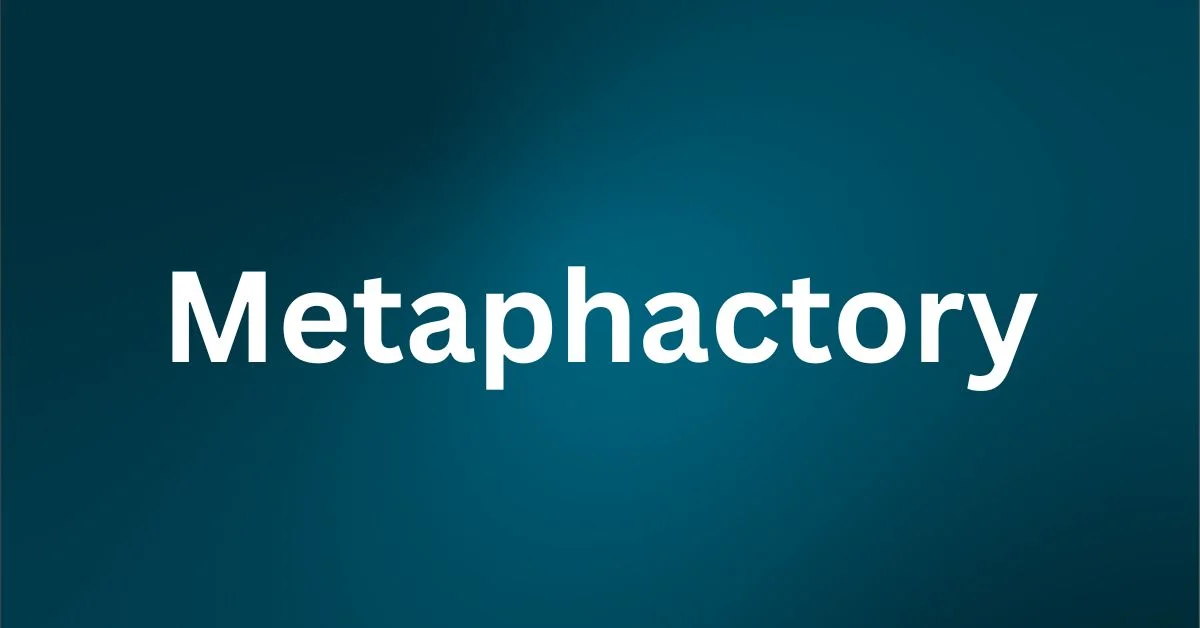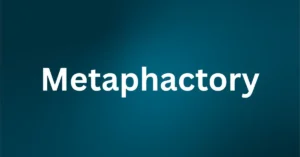In the modern era, data is abundant, diverse, and rapidly expanding. Organizations, researchers, and governments continuously generate and process information from multiple sources — structured databases, unstructured text, multimedia content, and even real-time sensor data. Managing this ocean of data requires not only storage but also intelligence: the ability to integrate, contextualize, and extract meaningful insights. This is where metaphactory comes into play.
Metaphactory can be described as a knowledge graph management and exploration platform that bridges the gap between raw data and human understanding. By combining semantic technologies, intuitive interfaces, and flexible frameworks, metaphactory allows organizations to transform scattered information into structured, accessible, and actionable knowledge.
This article explores metaphactory in detail. We will cover its definition, features, benefits, applications, workflows, comparisons with traditional data systems, integration strategies, challenges, and future potential. Practical tables will organize key insights, and FAQs will provide additional clarity for readers new to the subject.
What is Metaphactory?
Metaphactory is a platform for building, managing, and using knowledge graphs. A knowledge graph is essentially a structured network where data is stored as entities (nodes) and relationships (edges), making it easier to capture meaning, context, and connections. Unlike traditional databases that store information in rows and columns, knowledge graphs represent data in ways that reflect real-world relationships.
Metaphactory acts as both a tool and a framework. On one hand, it provides ready-to-use applications for data visualization, semantic search, and exploration. On the other hand, it offers developers and data scientists the flexibility to design custom knowledge-driven applications tailored to specific needs.
The result is a system that doesn’t just store information but unlocks knowledge by enabling deeper insights, better decision-making, and more intuitive access to complex datasets.
Core Features of Metaphactory
| Feature | Description |
|---|---|
| Knowledge Graph Support | Build, manage, and query semantic knowledge graphs. |
| Semantic Search | Natural language and ontology-based queries for intuitive exploration. |
| Data Integration | Combine heterogeneous data sources into a unified graph. |
| Visualization Tools | Graph views, dashboards, and semantic maps for interactive exploration. |
| Customization | Flexible frameworks for building domain-specific applications. |
| User Experience Design | Low-code tools for creating intuitive interfaces. |
| Compliance & Standards | Based on open standards such as RDF, SPARQL, and SHACL. |
| Scalability | Supports enterprise-scale datasets and distributed architectures. |
Why Metaphactory Matters
Data without context is often meaningless. Organizations frequently struggle with “data silos” — where departments or systems hold information that is inaccessible or inconsistent with others. Metaphactory provides solutions to this problem by:
- Breaking Silos: Integrating data across departments and systems.
- Contextualizing Knowledge: Adding meaning and relationships to raw facts.
- Improving Accessibility: Offering user-friendly tools to non-technical users.
- Supporting Innovation: Providing a foundation for AI, analytics, and advanced applications.
- Saving Costs: Reducing duplication of effort and improving data governance.
Applications of Metaphactory
1. Enterprise Knowledge Management
Organizations use metaphactory to unify business knowledge, making it accessible to employees across roles and departments.
2. Scientific Research
Researchers build domain-specific knowledge graphs to organize literature, datasets, and results, accelerating discovery and collaboration.
3. Healthcare
Hospitals and labs leverage metaphactory to integrate patient data, treatment protocols, and research insights, supporting precision medicine.
4. Cultural Heritage
Museums and libraries use it to organize and present collections with rich contextual metadata, improving public engagement.
5. Government and Policy
Governments build transparent, searchable databases of laws, statistics, and services, improving decision-making and citizen access.
Table – Applications of Metaphactory
| Sector | Use Case | Impact |
|---|---|---|
| Enterprise | Knowledge management | Efficiency, innovation |
| Research | Scientific knowledge graphs | Faster discoveries |
| Healthcare | Integrated patient and clinical data | Better care and outcomes |
| Culture & Arts | Digital collections management | Engagement, preservation |
| Government | Open data portals | Transparency, trust |
Benefits of Using Metaphactory
1. Enhanced Data Exploration
Users can navigate complex datasets intuitively, uncovering patterns and relationships.
2. Democratized Knowledge Access
Non-technical stakeholders can query and explore data without needing to know programming or query languages.
3. Support for Standards
Metaphactory relies on open standards, ensuring compatibility and longevity.
4. Agility and Customization
Enterprises can quickly design solutions tailored to their workflows.
5. Foundation for AI
Knowledge graphs enrich machine learning by providing structured, explainable context.
Knowledge Graphs in Metaphactory
The knowledge graph is the beating heart of metaphactory. It transforms fragmented information into structured networks.
- Nodes (Entities): Represent people, objects, concepts, or events.
- Edges (Relationships): Define how entities are connected.
- Ontology (Schema): Provides rules for meaning and classification.
For example, in a healthcare knowledge graph:
- Entity: Patient
- Entity: Disease
- Relationship: Patient diagnosed with Disease
This simple structure allows for queries like: “Which patients share risk factors for diabetes?”
Table – Traditional Databases vs Knowledge Graphs
| Aspect | Traditional Database | Knowledge Graph |
|---|---|---|
| Data Structure | Rows and tables | Nodes and edges |
| Flexibility | Rigid schemas | Dynamic ontologies |
| Relationships | Implicit, hard to query | Explicit and direct |
| Query Language | SQL | SPARQL, natural queries |
| Insight Generation | Limited | Rich and contextual |
Workflows in Metaphactory
Step 1: Data Ingestion
Import data from multiple sources (databases, APIs, files).
Step 2: Semantic Mapping
Define ontologies and rules to assign meaning and relationships.
Step 3: Knowledge Graph Creation
Integrate and organize data into a graph model.
Step 4: Exploration and Visualization
Use semantic search and visual dashboards to uncover insights.
Step 5: Custom Application Building
Leverage metaphactory’s frameworks to build domain-specific solutions.
Metaphactory in Comparison with Other Platforms
| Feature | Metaphactory | Standard Data Warehouses | Basic BI Tools |
|---|---|---|---|
| Semantic Technology | Yes | No | No |
| Knowledge Graphs | Core feature | Not supported | Not supported |
| Open Standards | Full support | Limited | Limited |
| Visualization | Integrated | Requires add-ons | Available |
| Flexibility | High | Moderate | Low |
Challenges in Implementing Metaphactory
While powerful, metaphactory adoption requires addressing:
- Initial Complexity: Setting up ontologies and graphs needs expertise.
- Change Resistance: Organizations must adapt workflows and culture.
- Data Quality Issues: Poor or inconsistent data undermines results.
- Resource Needs: Large-scale projects require time and investment.
These challenges are common to most advanced data platforms but can be mitigated with training, planning, and incremental adoption.
Future of Metaphactory
Metaphactory will likely evolve in the following ways:
- Integration with AI: Closer ties between machine learning and semantic graphs.
- Natural Language Interfaces: Expanding accessibility for all users.
- Industry-Specific Solutions: Tailored packages for healthcare, finance, and culture.
- Global Standards Leadership: Shaping the future of semantic web and data interoperability.
- Immersive Visualization: VR/AR-based knowledge graph exploration.
Conclusion
The digital world generates data at unprecedented rates, but the true challenge lies in transforming that data into actionable knowledge. Metaphactory offers a powerful solution by combining semantic technologies, knowledge graphs, and intuitive interfaces into a single, flexible platform. From enterprises seeking efficiency to researchers searching for breakthroughs, metaphactory provides the tools to explore, integrate, and understand data meaningfully.
By emphasizing context, openness, and accessibility, metaphactory empowers both technical and non-technical users. It not only solves today’s data challenges but also lays the foundation for a future where knowledge is structured, transparent, and universally accessible.
Frequently Asked Questions (FAQs)
1. What is meta-phactory used for?
Meta-phactory is used for building and exploring knowledge graphs, enabling organizations to integrate, manage, and analyze complex data.
2. Is meta-phactory only for large enterprises?
No. While it supports enterprise-scale projects, it is equally useful for research institutions, cultural organizations, and smaller setups.
3. Does meta-phactory require programming knowledge?
Not necessarily. While developers can customize it deeply, non-technical users can still perform semantic search and exploration easily.
4. How does meta-phactory differ from databases?
Unlike traditional databases, meta-phactory builds knowledge graphs that explicitly represent entities and relationships for contextual insights.
5. Can meta-phactory support AI applications?
Yes. Knowledge graphs from meta-phactory provide structured, explainable data that improves machine learning and artificial intelligence outcomes.
For more information, click here.









